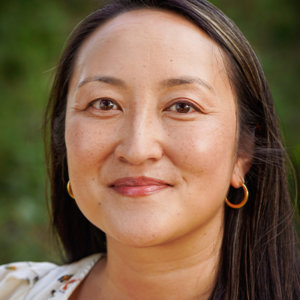To Solve for Poverty and Inequity, Guaranteed Income Must Be Targeted
One of the often-overlooked aspects of living in poverty is the cost to a person’s wellbeing — the toxic stress of constantly worrying about whether your car is going to break down or if this month’s rent check is going to clear takes a massive toll, with research showing that such severe financial strain can lower IQ scores among adults and have lifelong negative effects on a child’s development.
As many have noted, poverty is a policy choice influenced by the narratives that we hold about why people are poor, and who is deserving of government help. As long as we believe in the false notion that poverty exists because people made bad choices and that the impacts are only financial, we will continue to diagnose the problem inaccurately and fail to come up with effective solutions. This is why our anti-poverty programs in the U.S. have traditionally been centered around fixing people, not the circumstances that they are in, and are measured strictly by their ability to counter only economic instability. One policy with promise to disrupt our narratives about poverty and deservedness and achieve both the financial outcomes politicians historically seek as well as provide much-needed space to breathe and exist without fear to recipients is a guaranteed income. Unlike its cousin Universal Basic Income, guaranteed income is rooted in the racial and gender justice movements in the mold of visionaries such as Johnnie Tillmon and Dr. Martin Luther King, Jr.
The pandemic has spurred new interest in this old idea, with 100 pilots established in recent years across the country. The qualifications for these programs range from specific, such as the Magnolia Mother’s Trust’s focus on Black mothers living in extreme poverty; to targeting only by income, such as the Stockton Economic Empowerment Demonstration. Given the racism and sexism inherent within our economy, even solely targeting by income has an equity-building effect, given people of color — especially women of color — are more likely to live in poverty.
Ashley, a Black woman receiving a guaranteed income through Los Angeles’s BIG:LEAP program, described the liberating effects of being able to afford her son’s medical care. “When I received the funds, I was so happy, I cried. I feel less anxious and stressed because I am now able to take my son to his therapy sessions. Before this help, I felt that I was not even there when people would speak to me. My mental health was not in a good place, but I feel less overwhelmed now.”
In our new report, Making Sure the Shoe Fits, we offer new research supporting the targeting of guaranteed income pilots to those who need it most like Ashley. As a leader in the guaranteed income space, we focused our analysis on California. We reviewed 27 current guaranteed income projects managed across 10 of the state’s 58 counties, measuring the cost of living in each area using the organization’s Family Needs Calculator (FNC). Unlike the outdated federal measures of poverty, the FNC is representative of the actual costs of living and includes expenses such as housing, childcare, groceries, health care, transportation, and taxes.
Our findings show that people of color are disproportionately represented among those who are struggling in the state. For example, the FNC to cover the basic needs of two adults and two children in San Francisco — home to four different guaranteed income pilots — is $153,227, but Black women in the city are paid barely a third of that.
A significant factor in this massive gap between cost of living and a Black woman’s ability to live in San Francisco is occupational segregation — the concentration of Black women in low wage professions. For example, the top five jobs for Black women in the city include three in the service sector that pay low wages: customer service representative; laborer and freight, stock, and material mover; and medical assistant. Meanwhile, white men and women are concentrated in high-wage jobs in the managerial and professional sector. This type of concentration does not reflect choices people are making, but rather reflects the types of opportunities, conditions of living and blatant discrimination within labor markets in the U.S.
We see this across the 10 counties with GI pilots in California, where two in five residents do not get paid enough to cover their basic needs. Three-quarters of those who are below the FNC – 1.5 million individuals — are people of color; almost three in five families headed by a Latinx woman are below the FNC, and more than half of the households headed by Black women cannot meet their basic needs.
The potential of targeted guaranteed income programs is vast. Not only does it extend resources to those who truly need it, helping in part to right the wrongs of our policies and systems that created inequitable poverty in the first place, but it also helps heal the impacts of poverty and populates the notion that people of color who are poor can indeed be trusted to make the best decisions for themselves and their families. This fundamental notion that reinforces a person’s humanity is currently reserved for the wealthy and white. As a pioneer in this crucial space, California must set the example for other states — and the country — on the importance of using this policy to close longstanding racial and gender inequities that are only being compounded by current inflation and rising interest rates.
Guaranteed income has tremendous potential to create a more equitable economy, but only if programs target these resources to those who have been most marginalized by our economy.

Jhumpa Bhattacharya is executive vice president at Insight Center for Community Economic Development.

Yvonne Yen Liu is director of research at Insight Center for Community Economic Development.
